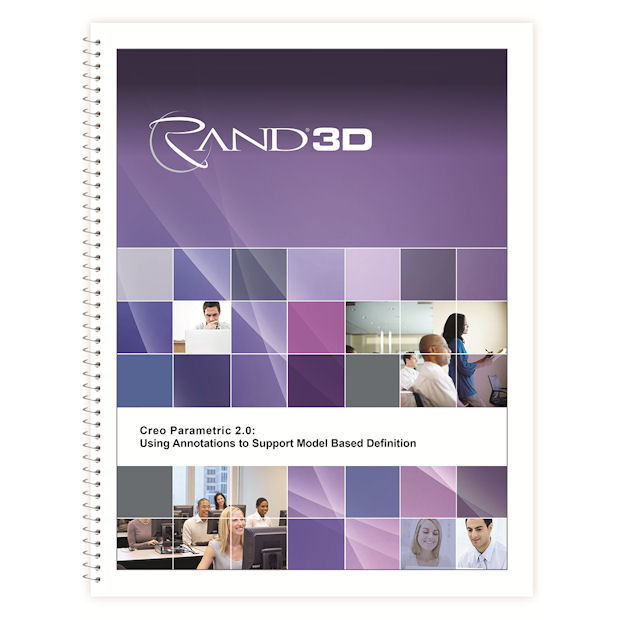Using Annotations in Creo Parametric to Support Model Based Definition
Latest News
July 21, 2014
 Dear Desktop Engineering Reader:
Dear Desktop Engineering Reader:
My official training on Unix consisted of a single introductory, um, course that lasted about 15 minutes. Class materials were a cheat sheet of commands and a warning not to enter rm -rf / ever because it would delete everything. Such thoroughness was about typical of the time. Nowadays, engineering and businesses invest in professional training, knowing that quality training has a direct impact on staff productivity and creativity as well as the company’s the ability to compete.
Today’s Check it Out link takes you to a just announced training class for PTC Creo Parametric users from Rand 3D, a division of engineering design and information technology solutions and service provider Rand Worldwide. Rand 3D has offered professional-level engineering software and training classes for more than 20 years. Its curricula includes a variety of training solutions for Dassault Systèmes and PTC software users, and classes are available live online, self-paced online and live in-person.
Rand 3D’s new class, “Creo Parametric: Using Annotations to Support Model Based Definition,” is a one-day course covering Creo Parametric’s 3D annotation tools and how you can use these tools to support your Model Based Definition (MBD) product development initiative. But let’s stop right there for a sec.
It’s important that you understand that this is not a class for designers at outfits considering a move to an MBD methodology to improve collaboration across disciplines like engineering, design, manufacturing, quality control, inspection and project management. Rather, it is a class for designers and engineers at companies that have committed to an MBD strategy and who need to know what annotation tools in PTC Creo Parametric support MBD processes and how to use those tools properly and/or better.
Ok, now, the class begins with a broad overview of MBD, touching upon standards and sharing information as well as offering some tips on best practices. The instruction then turns to PTC Creo Parametric, the annotation interface and such features and capabilities as combination states, annotation planes and detail trees. The next unit covers preparing your models. Among the topics addressed here are configuration options, parameters, layers and view states.
The course then discusses issues relating to GD&T (geometric dimensions and tolerances) and PMI (product and manufacturing information). This presentation delves into such specifics like geometric tolerances, semantic PMI and how to create dimensions. The final class unit, “Additional Annotations,” is all about notes, note libraries, default surface finish symbols, creating and placing symbols and adding sectioned views.
“Creo Parametric: Using Annotations to Support Model Based Definition” classes begin in August and will meet at various sites throughout the U.S. and Canada. The instruction level assumes that you have a solid understanding of 3D modeling with PTC Creo Parametric. Class materials were developed by the ASCENT Center for Technical Knowledge, also a division of Rand Worldwide, which designs, develops and produces knowledge products for leading engineering software tools.
You can learn more about “Creo Parametric: Using Annotations to Support Model Based Definition” and download the course description from today’s Check it Out link. From the course landing page, you also have access details on other professional-level classes offered by Rand 3D.
Thanks, Pal. – Lockwood
Anthony J. Lockwood
Editor at Large, Desktop Engineering
Go here to learn more about “Creo Parametric: Using Annotations to Support Model Based Definition.”
Subscribe to our FREE magazine, FREE email newsletters or both!
Latest News
About the Author
Anthony J. Lockwood is Digital Engineering’s founding editor. He is now retired. Contact him via [email protected].
Follow DE






